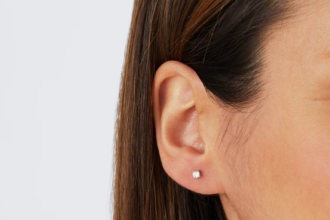Addiction isn’t a choice or a moral failing; it’s a complex condition that affects the brain and behavior. Seeking professional treatment is crucial for overcoming addiction and reclaiming a healthy, fulfilling life. This guide will walk you through essential tips for finding the right treatment for your addiction, offering practical advice to help you or a loved one on the path to recovery. Keep on reading to learn more!
Understanding the Different Types of Addiction
Addiction can take many forms, from substance abuse to behavioral addictions like gambling or internet use. Understanding the type of addiction affecting you or someone you care about is the first step toward effective treatment.
Substance Abuse
Substance abuse involves the harmful or hazardous use of psychoactive substances, including alcohol and illicit drugs. Recognizing the specific substance causing the problem is vital for targeted treatment.
Behavioral Addiction
Behavioral addictions are characterized by an inability to resist impulses or urges, leading to behaviors that are harmful to oneself or others. Common behavioral addictions include gambling, internet use, and shopping.
Co-occurring Disorders
Many individuals with addiction also suffer from co-occurring mental health disorders, such as depression or anxiety. Treating both the addiction and the mental health condition simultaneously is often necessary for successful recovery.
Signs and Symptoms of Addiction
Early recognition of addiction can significantly improve the chances of successful treatment. Here are some common signs and symptoms to watch for:
Physical Signs
Physical symptoms can include changes in appearance, neglect of personal hygiene, weight loss or gain, and unexplained injuries or health issues.
Behavioral Changes
Behavioral changes often involve increased secrecy, neglecting responsibilities at work or home, and engaging in risky or illegal activities to obtain the substance or satisfy the addictive behavior.
Emotional and Psychological Symptoms
Emotionally, individuals may experience mood swings, irritability, anxiety, and depression. Psychological dependence can manifest as obsessive thinking about a substance or behavior.
The Search for the Right Treatment
Finding the right treatment involves several critical considerations. Here are some tips to help you identify the most effective treatment for your unique situation:
Consider Individual Needs
Each person’s addiction experience is unique. Consider factors like the type of addiction, co-occurring disorders, and personal preferences when choosing a treatment program.
Evidence-Based Practices
Look for treatment programs that utilize evidence-based practices, such as cognitive-behavioral therapy (CBT), medication-assisted treatment (MAT), and motivational interviewing. These methods have been proven effective in treating addiction.
Professional Guidance
Seeking advice from healthcare professionals, such as addiction specialists and therapists, can provide valuable insights into the best treatment options. They can help tailor a plan that suits your specific needs. Also, rehab centers are always a great option. And, whether you are looking for inpatient substance abuse treatment California, or any other state, just look online. That way, it will be easier for you to gather information and choose the most suitable rehab center.
The Role of Support Systems
Support from family, friends, and support groups is a crucial component of the recovery process. Here’s how these networks can assist:
Family Involvement
Family members can provide emotional support and encouragement. Family therapy sessions can address any underlying issues and improve communication and understanding within the family unit.
Friends and Peers
Friends who understand and support your recovery goals can offer companionship and motivation. Peer support groups, like Narcotics Anonymous (NA) or Alcoholics Anonymous (AA), provide a sense of community and shared experiences.
Professional Support Groups
Joining support groups led by professionals offers structured assistance and access to resources designed to aid recovery. These groups provide a safe space to discuss challenges and celebrate successes.
Overcoming Barriers to Seeking Help
Several common barriers can hinder the path to treatment. Addressing and overcoming these obstacles is crucial for accessing the help needed:
Stigma and Shame
Many individuals feel ashamed of their addiction and fear judgment. Education and open conversations about addiction can help reduce stigma and encourage people to seek help.
Financial Constraints
Cost can be a significant barrier to treatment. Explore options like insurance coverage, sliding scale fees, and government-funded programs to make treatment accessible.
Fear of Failure
The fear of not succeeding can deter individuals from seeking treatment. It’s important to understand that recovery is a process, and setbacks are a normal part of the journey.
Staying Committed to Recovery
Maintaining motivation and commitment to sobriety is essential for long-term success. Here are some strategies to help stay on track:
Set Realistic Goals
Setting achievable, short-term goals can provide a sense of accomplishment and keep you motivated. Celebrate small victories along the way.
Develop Healthy Habits
Replacing unhealthy habits with positive ones, such as exercise, hobbies, and mindfulness practices, can support your recovery and overall well-being.
Seek Ongoing Support
Continuing to engage with support groups and therapy, even after initial treatment, can help reinforce your commitment and provide ongoing encouragement.
Finding the right treatment for addiction is a personalized process that requires careful consideration and support. By understanding the types of addiction, recognizing the signs and symptoms, and seeking professional guidance, you can identify the most effective treatment options. Remember the importance of support systems and overcoming barriers to seeking help. Stay committed to your recovery with realistic goals, healthy habits, and ongoing support.
If you or someone you know is struggling with addiction, don’t hesitate to seek help. Reach out to a healthcare professional or contact a local support group. Together, we can overcome addiction and build a brighter, healthier future.














